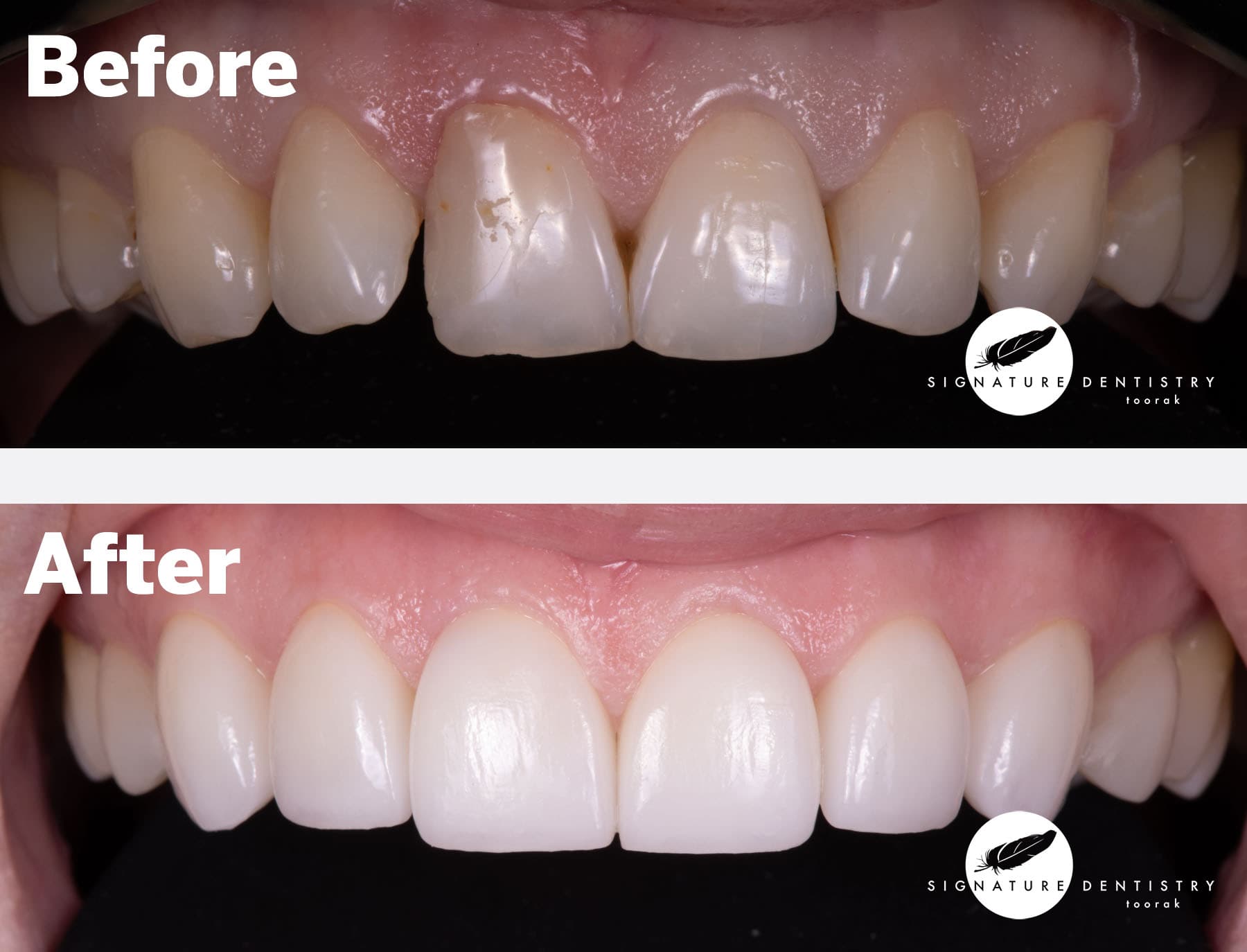Bad veneers before and after photos have become a popular topic in cosmetic dentistry, as more people seek to improve their smiles and overall dental health. Whether you're considering veneers for aesthetic or restorative purposes, understanding the process, potential issues, and outcomes is essential. This article will explore everything you need to know about bad veneers and how they can be transformed into beautiful, long-lasting solutions.
Many individuals who experience dental imperfections often turn to veneers as a viable solution. However, not all veneers yield perfect results. In some cases, poorly placed veneers or inadequate planning can lead to unsatisfactory outcomes. This is where "bad veneers before and after" stories come into play, offering valuable insights into the challenges and solutions within the field of cosmetic dentistry.
This article will guide you through the journey of transforming bad veneers into stunning smiles, complete with expert advice, real-life examples, and actionable tips. Whether you're a patient considering veneers or a professional in the dental industry, this comprehensive guide will provide you with the knowledge and resources you need to make informed decisions.
Read also:Exploring The Enigma Of Paige Bueckers Nude Unveiling The Athlete Beyond The Court
Understanding Veneers: What Are They?
Veneers are thin, custom-made shells designed to cover the front surface of teeth. They are typically made from porcelain or composite resin and are used to enhance the appearance of teeth. The primary purpose of veneers is to improve cosmetic flaws such as discoloration, chips, gaps, or misalignment. However, veneers can also serve restorative functions, providing structural support to weakened teeth.
Types of Veneers
There are two main types of veneers:
- Porcelain veneers: Known for their durability and natural appearance, porcelain veneers are the most popular choice in cosmetic dentistry.
- Composite veneers: These are more affordable but may not last as long as porcelain veneers. They are ideal for minor cosmetic fixes.
Common Issues with Bad Veneers
While veneers are generally successful in enhancing smiles, some patients experience issues with their veneers due to improper placement, poor material quality, or inadequate preparation. These problems can lead to dissatisfaction and the need for revision or replacement.
Signs of Bad Veneers
Here are some common signs that indicate you may have bad veneers:
- Uneven alignment or spacing
- Chipping or cracking
- Poor color match with surrounding teeth
- Excessive thickness or bulkiness
- Pain or discomfort during biting or chewing
Bad Veneers Before and After: Real-Life Examples
Visual examples of bad veneers before and after treatment can provide valuable insights into the transformation process. Many dental clinics and practitioners share before-and-after photos to demonstrate the effectiveness of their corrective procedures.
Case Study: Transforming a Smile
In one case, a patient presented with poorly placed veneers that caused discomfort and affected their confidence. The dentist assessed the situation and recommended a complete overhaul of the veneers. After the procedure, the patient experienced a significant improvement in both function and aesthetics.
Read also:Unveiling The Life And Legacy Of Sy Kravitz
Causes of Bad Veneers
Bad veneers can result from several factors, including:
- Inexperienced or unqualified dentists
- Use of low-quality materials
- Inadequate preparation of the teeth
- Poor communication between the dentist and patient
Understanding these causes can help patients make better decisions when choosing a dentist and planning their veneer treatment.
How to Fix Bad Veneers
If you have bad veneers, there are several options for correction:
1. Replacing the Veneers
In many cases, replacing the existing veneers with new ones is the best solution. This involves removing the old veneers and preparing the teeth for new ones. A skilled cosmetic dentist can ensure that the new veneers are properly aligned, color-matched, and functional.
2. Repairing Damaged Veneers
Minor issues such as chips or cracks can often be repaired without replacing the entire veneer. Composite resin can be used to restore the damaged area, providing a cost-effective solution.
Choosing the Right Dentist
Selecting the right dentist is crucial for achieving optimal results with veneers. Look for a dentist with extensive experience in cosmetic dentistry and a portfolio of successful veneer cases. Reading reviews and asking for recommendations can also help you make an informed decision.
Questions to Ask Your Dentist
- How many veneer procedures have you performed?
- Can you show me examples of your previous work?
- What materials do you use for veneers?
- What is your process for ensuring proper fit and alignment?
Cost Considerations
The cost of veneers can vary significantly depending on factors such as location, dentist experience, and material choice. On average, porcelain veneers can range from $900 to $2,500 per tooth, while composite veneers may cost between $250 and $1,500 per tooth. Keep in mind that correcting bad veneers may incur additional costs, so it's important to discuss pricing with your dentist upfront.
Insurance Coverage
Most dental insurance plans do not cover cosmetic procedures like veneers. However, if the veneers are being placed for restorative purposes, partial coverage may be available. It's always a good idea to check with your insurance provider to understand your options.
Maintaining Your Veneers
Proper maintenance is key to ensuring the longevity of your veneers. Follow these tips to keep your veneers in excellent condition:
- Brush and floss regularly
- Avoid biting hard objects
- Visit your dentist for regular check-ups
- Use a nightguard if you grind your teeth
Conclusion: Transform Your Smile with Confidence
Bad veneers before and after stories highlight the importance of proper planning, execution, and maintenance in cosmetic dentistry. By understanding the causes of bad veneers and the available solutions, you can make informed decisions about your dental care. Whether you're considering veneers for the first time or seeking to correct existing issues, working with a skilled and experienced dentist is essential for achieving the best possible results.
We encourage you to share your thoughts and experiences in the comments section below. Your feedback can help others who are on a similar journey to transform their smiles. Additionally, feel free to explore other articles on our site for more insights into dental health and cosmetic procedures.
Table of Contents
- Understanding Veneers: What Are They?
- Common Issues with Bad Veneers
- Bad Veneers Before and After: Real-Life Examples
- Causes of Bad Veneers
- How to Fix Bad Veneers
- Choosing the Right Dentist
- Cost Considerations
- Maintaining Your Veneers
- Conclusion: Transform Your Smile with Confidence

